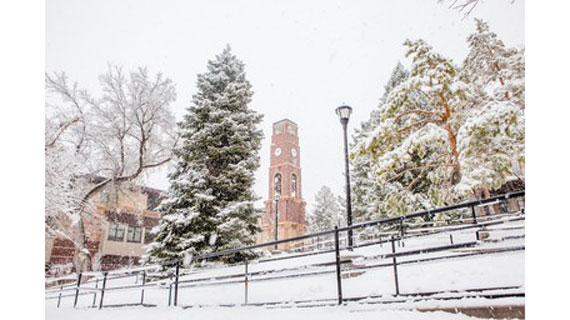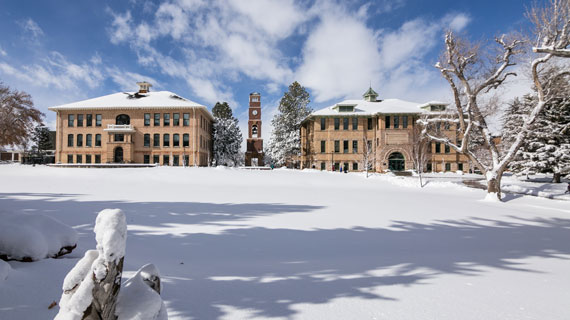Winter Safety Tips for the SUU Campus
Posted: January 06, 2017 | Author: Southern Utah University | Read Time: 2 minutes

Walking on ice and snow can be challenging. Snow and icy conditions accounts for many slips and falls during inclement weather. There are ways to stay injury free and ensure safety by noting the following safety tips:
Planning ahead can be one of the greatest ways to prevent injuries and avoid other incidents. Here are a few things to plan ahead for:
- Giving yourself plenty of time to walk slowly using a penguin like walk in snow and ice. Spreading your feet out slightly while walking on ice increases your center of gravity.
- Leave your living quarters wearing proper footwear. A heavy treaded shoe with a flat bottom works best to grip the snow and ice and prevent slipping. (In addition wear closed toe shoes to prevent foot injury.)
- Take time to be alert while walking on ice and snow. And always keep an eye out for black ice. Black ice can be deceiving as it is common to mistake it for a wet surface.
- Be a defensive pedestrian. With winter conditions drivers can’t always see you and road conditions may not provide them time enough to stop quickly and safely. Make sure drivers have come to a complete stop before crossing the street. Always stay on designated walkways. Also wearing a bright coat or scarf to be easily seen can help both during the day and at night.
- If you’re walking on or around campus during the day come prepared with sunglasses. Wearing sunglasses helps prevent eye damage from the suns reflection on the snow.
In addition to planning ahead and giving yourself plenty of time:
Make use of handrails on stairs, outdoor walkways, and vehicles.
Remove snow or mud from your shoes before entering any building. And enter buildings cautiously. Your shoes may be wet and can cause you (or others) to slip or fall.
Know your limitations. Carrying large packages or other items that limit vision can lead to slips and trips.
Keep in mind that at times even taking the necessary precautions may not be enough and a fall could be inevitable. If you fall, relax and try to fall as limply as possible. Try to avoid landing on your knees, wrists, or spine. Try to fall on a fleshy part of your body, such as your side. Avoid using your arms to stop your fall.
For more information about winter safety please visit: the National Safety Council.
This article was published more than 3 years ago and might contain outdated information or broken links. As a result, its accuracy cannot be guaranteed.
Tags: Campus Resources



